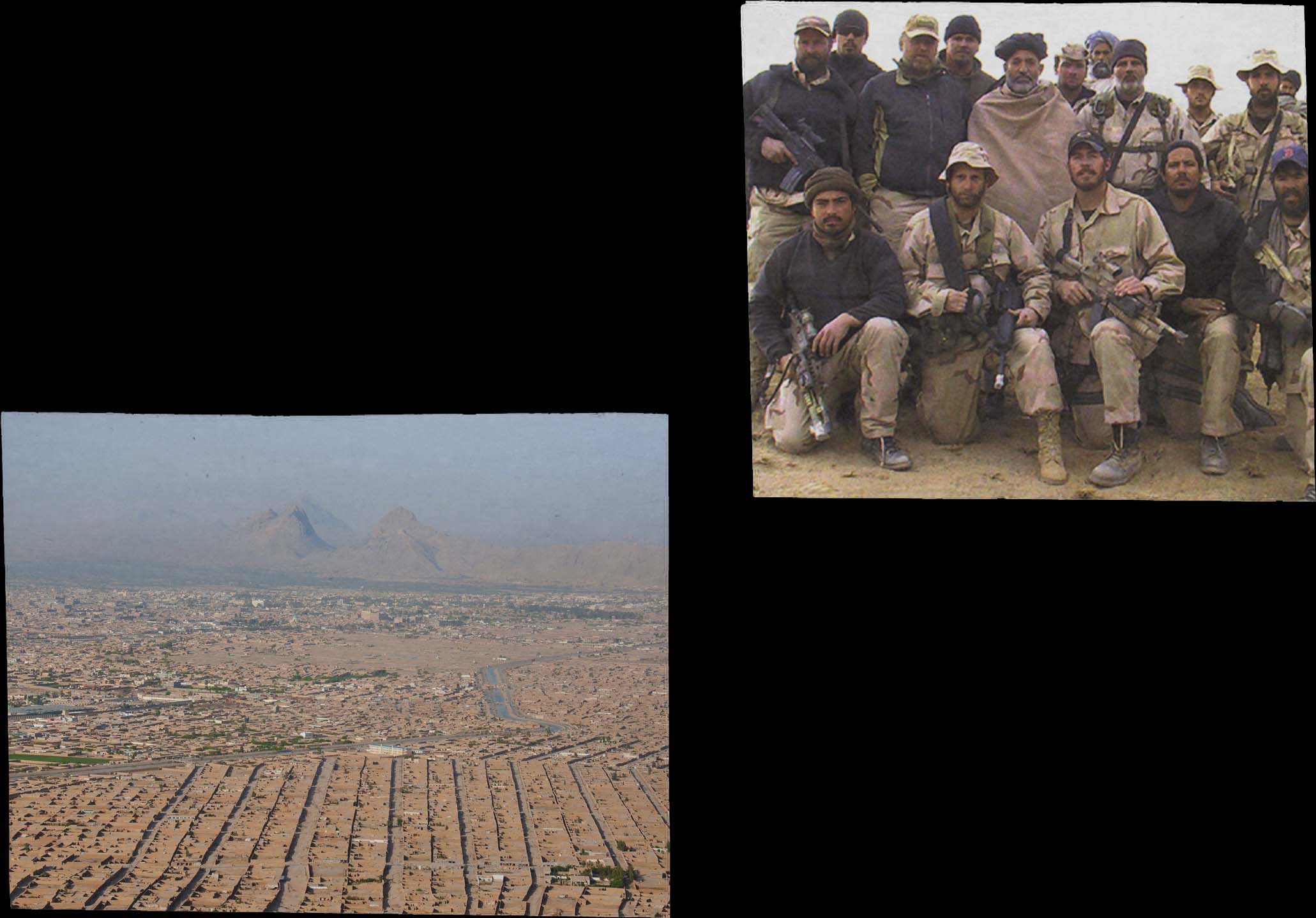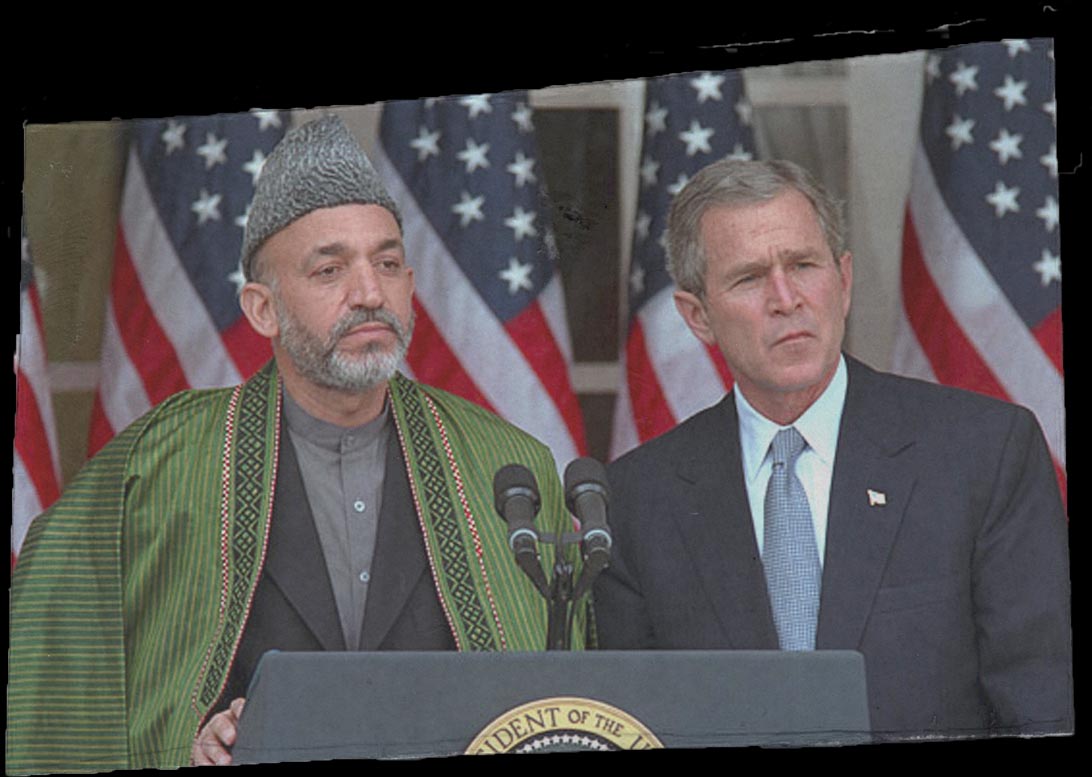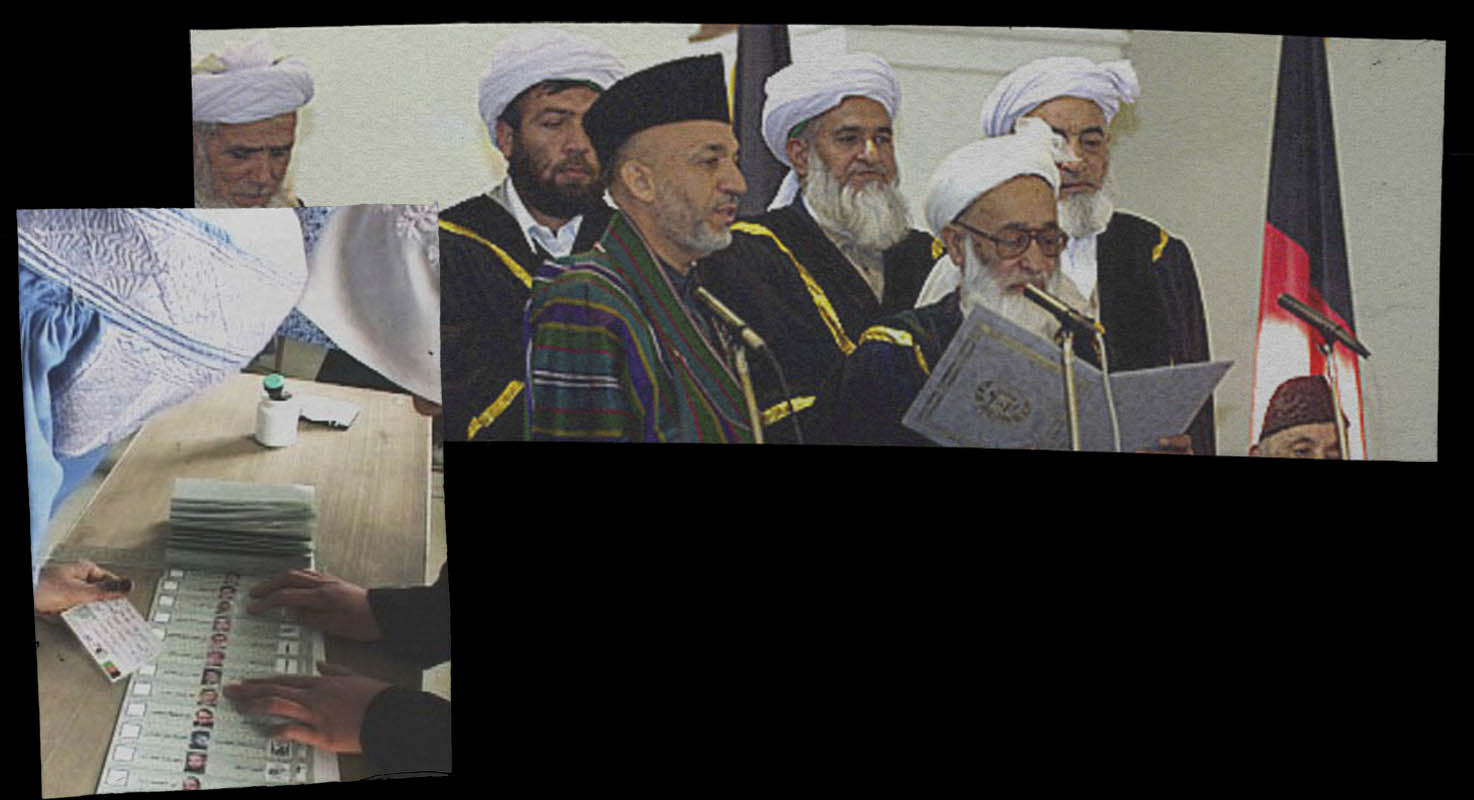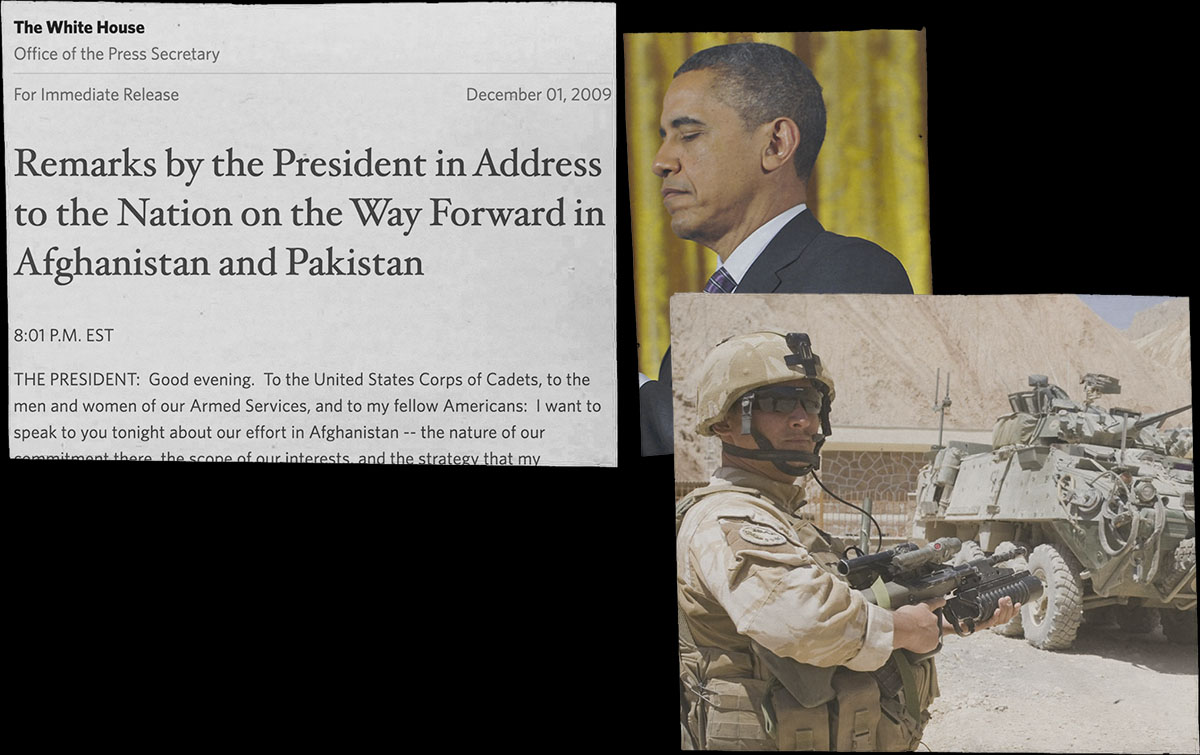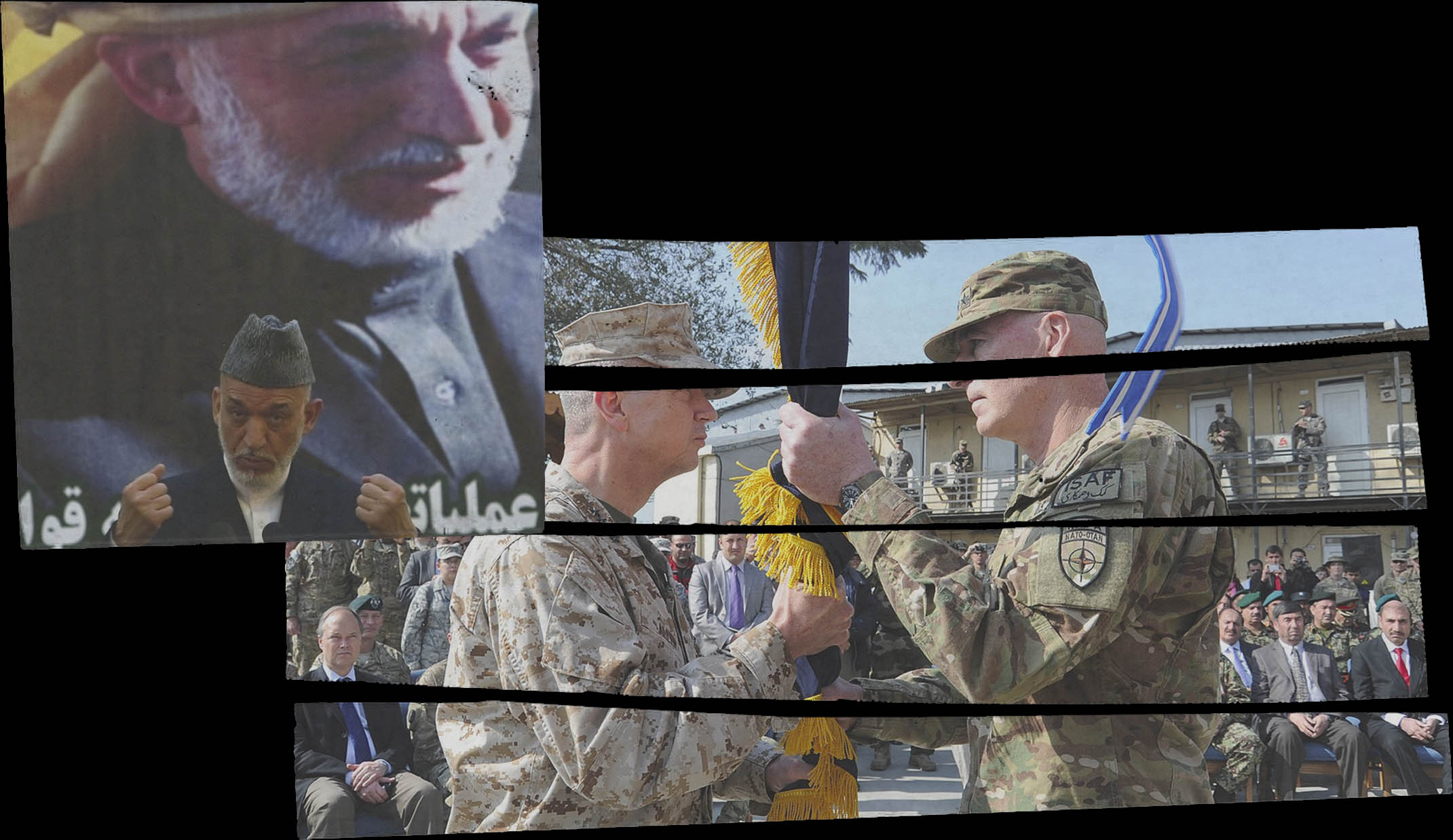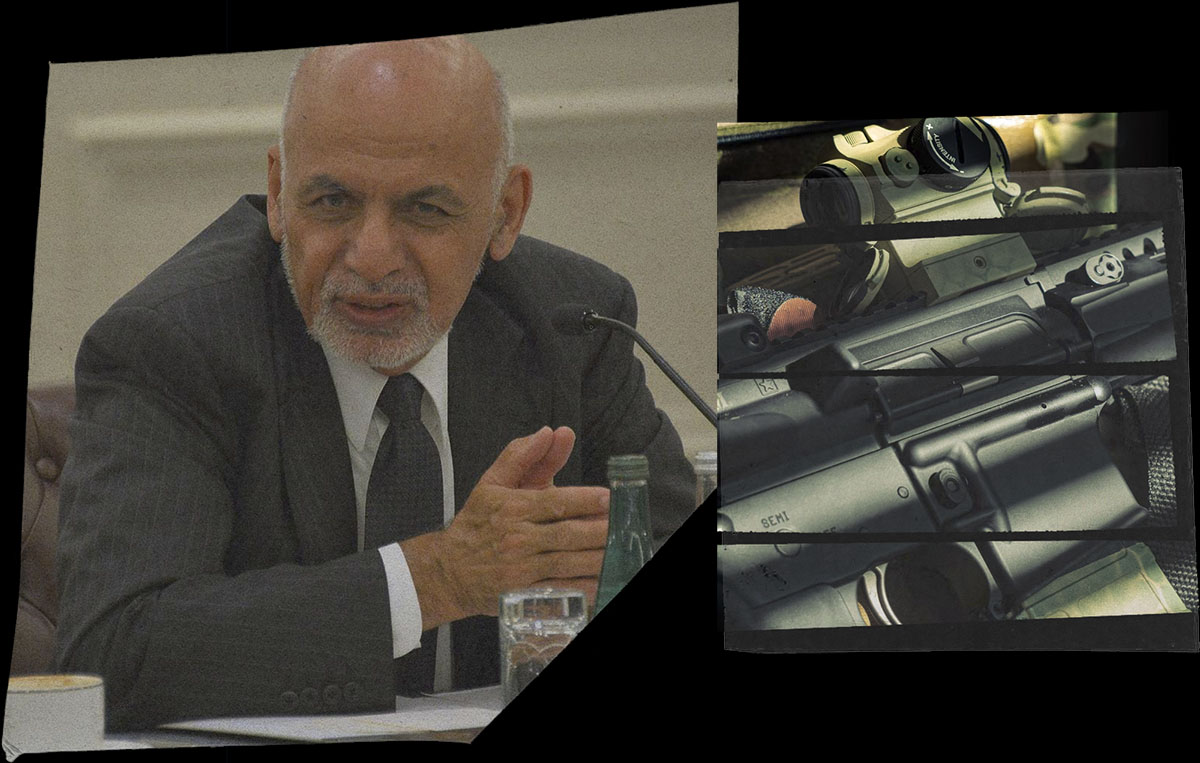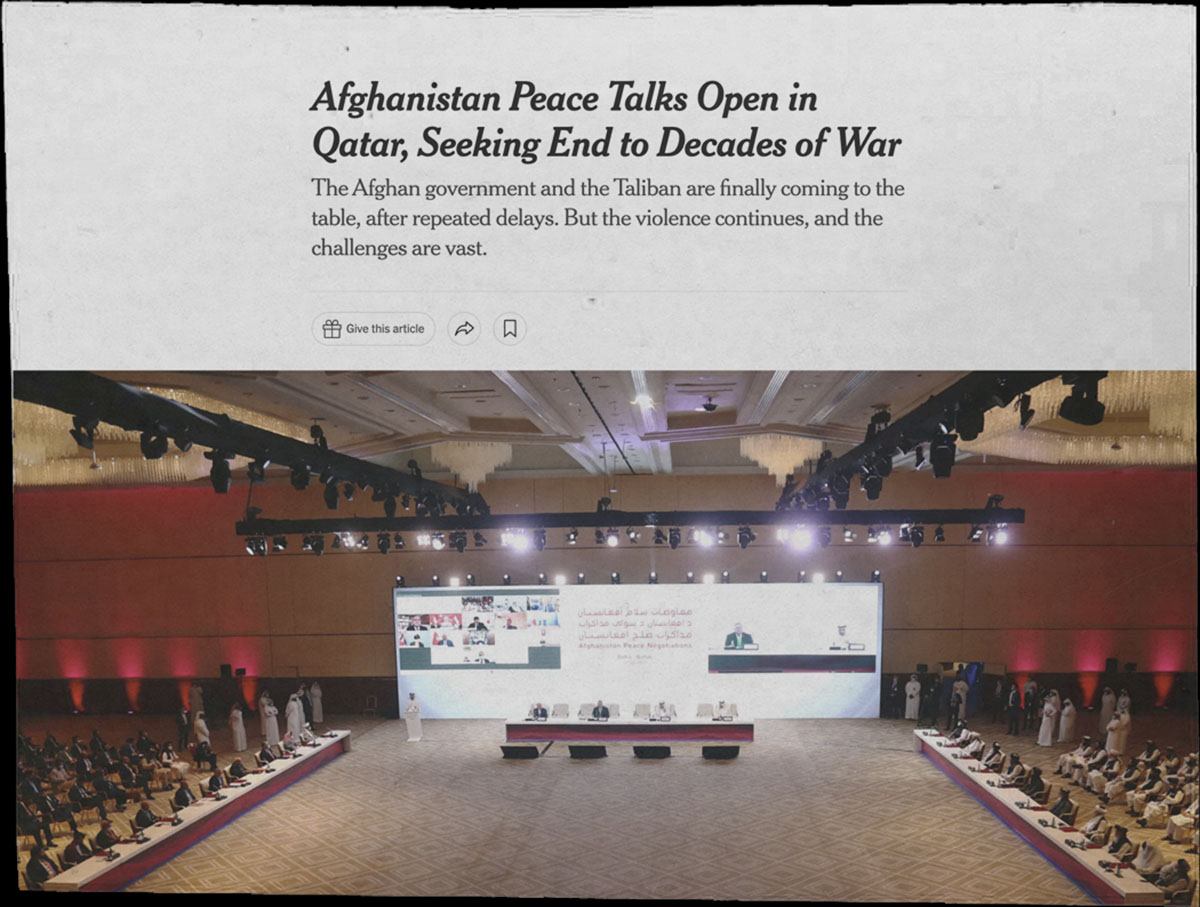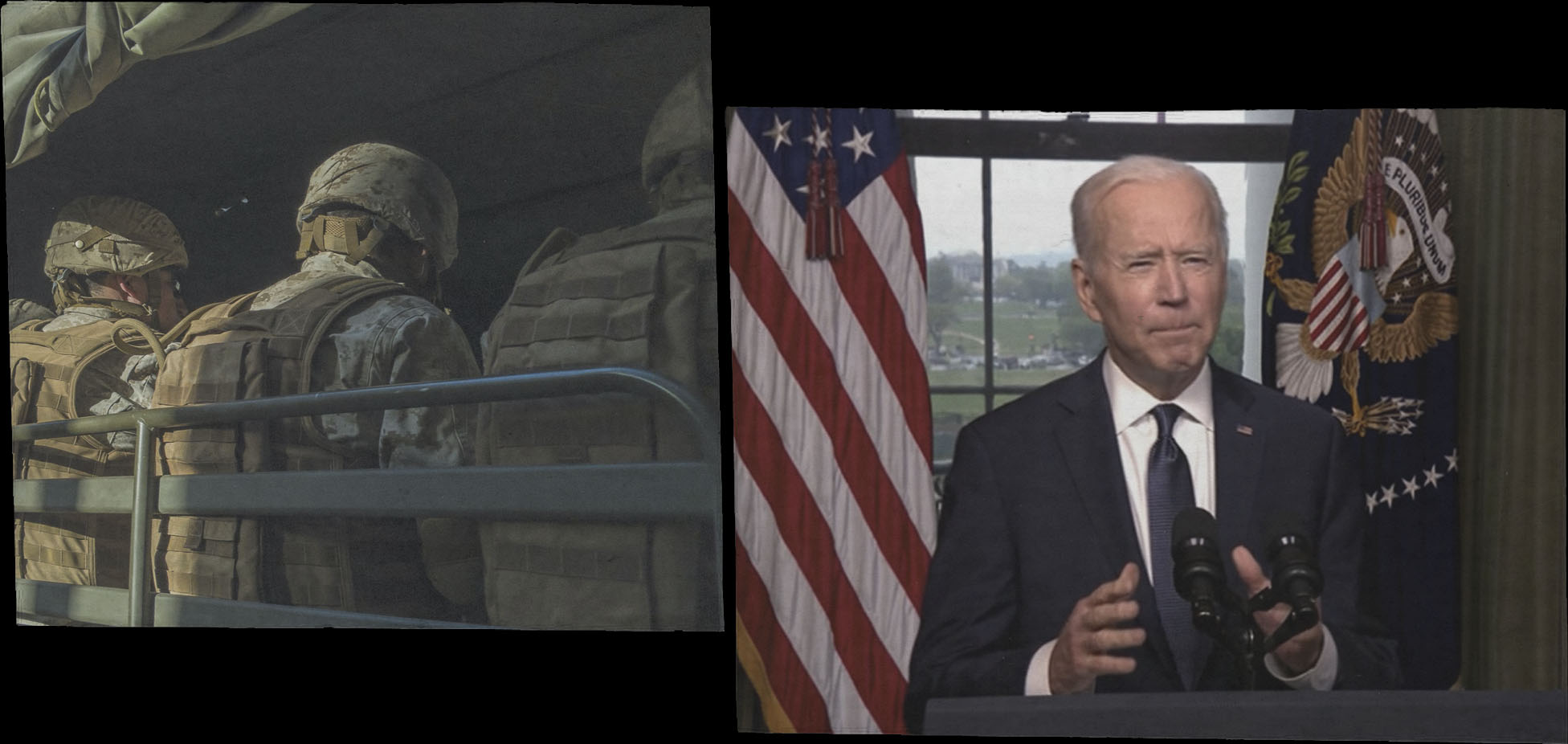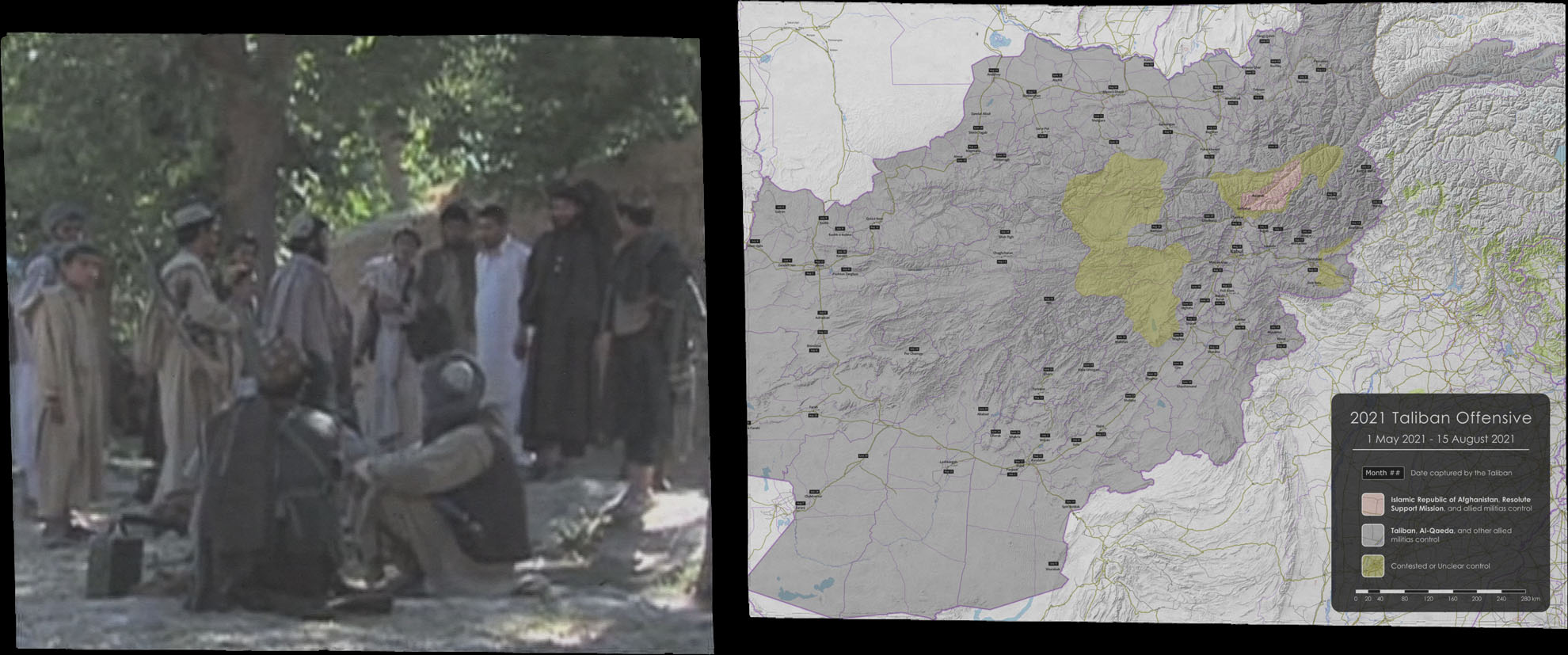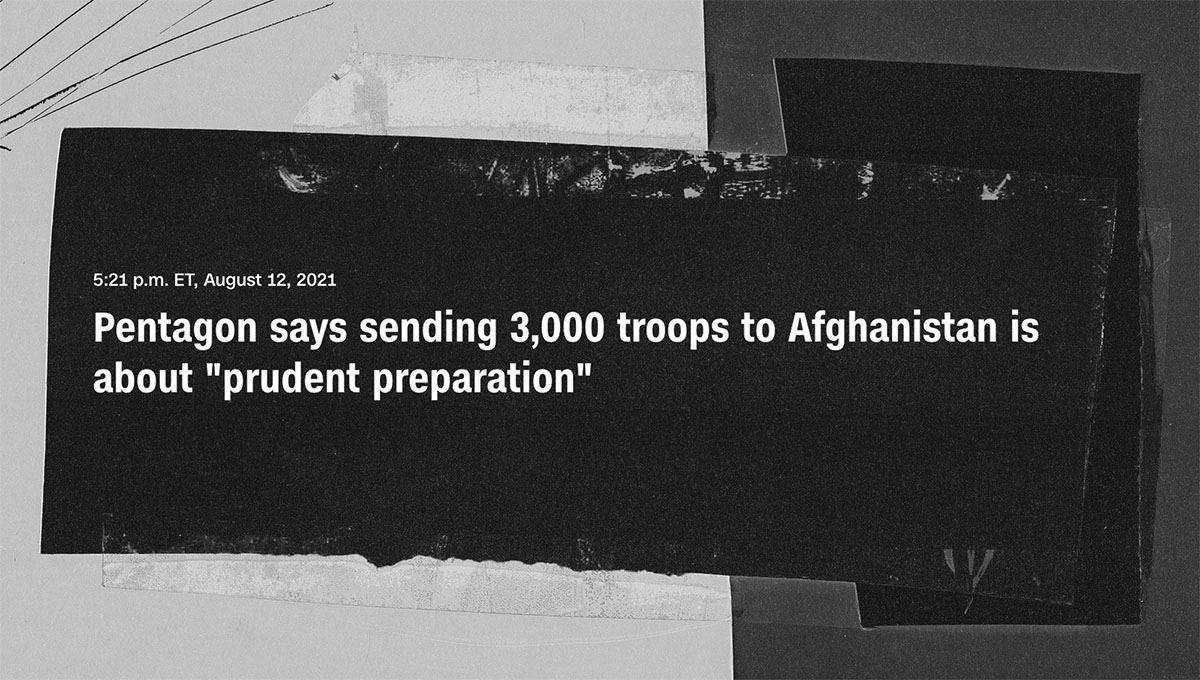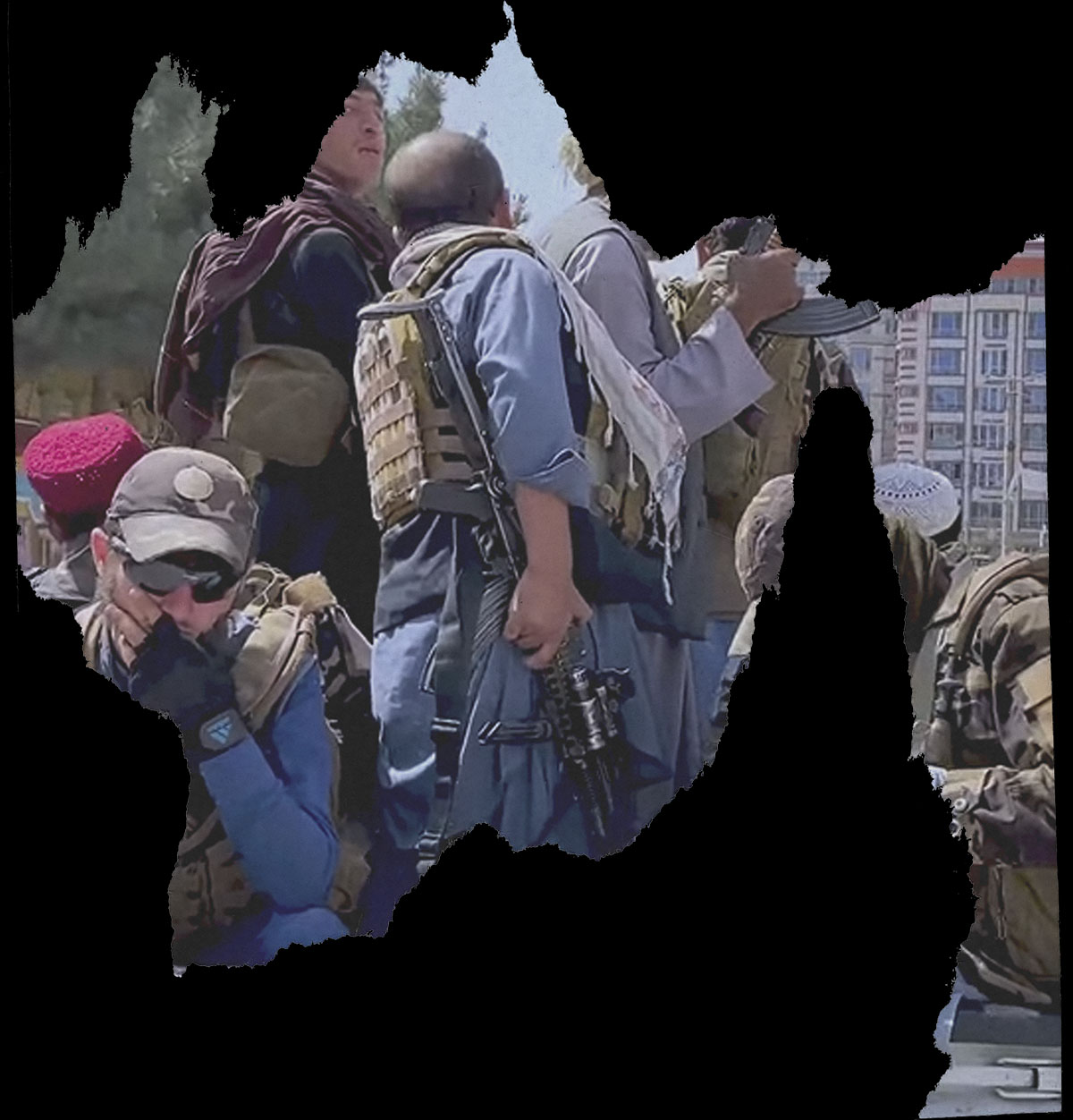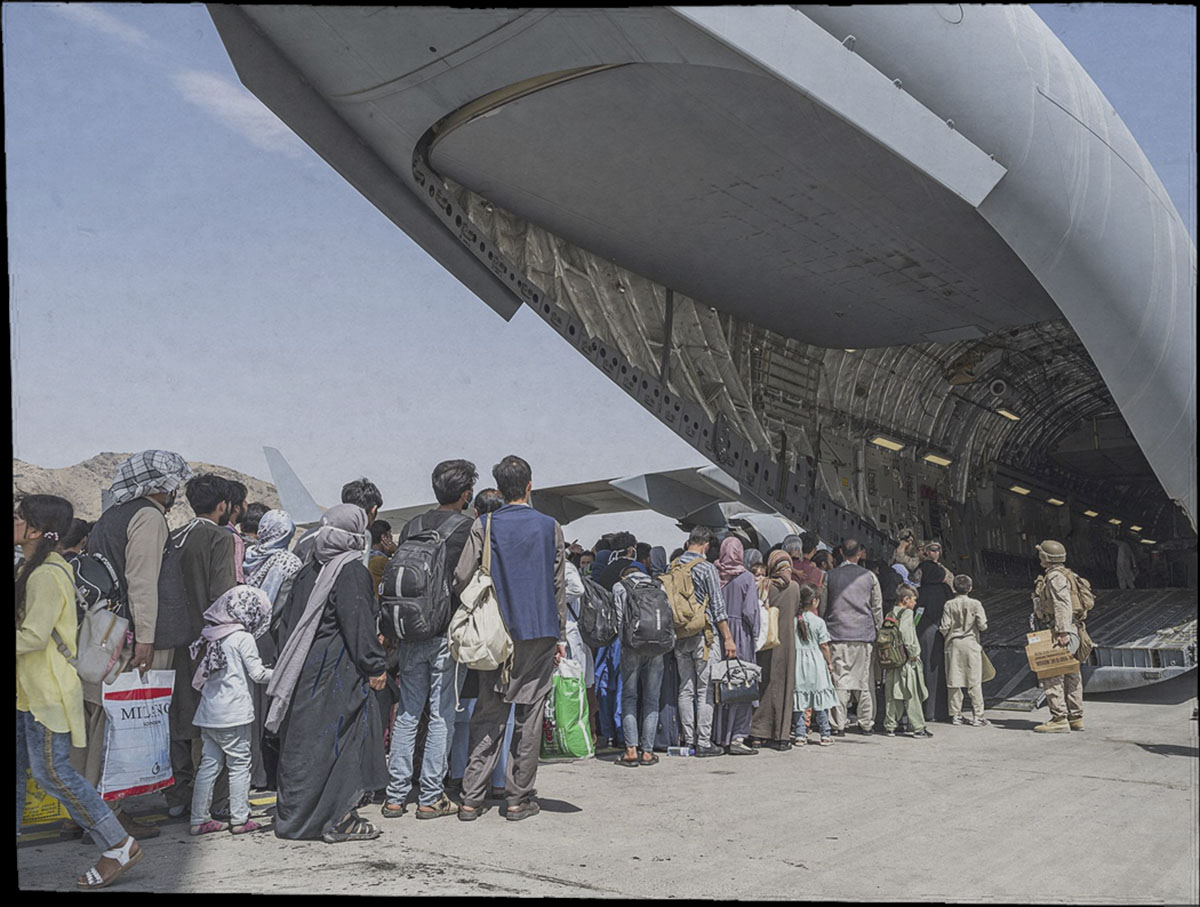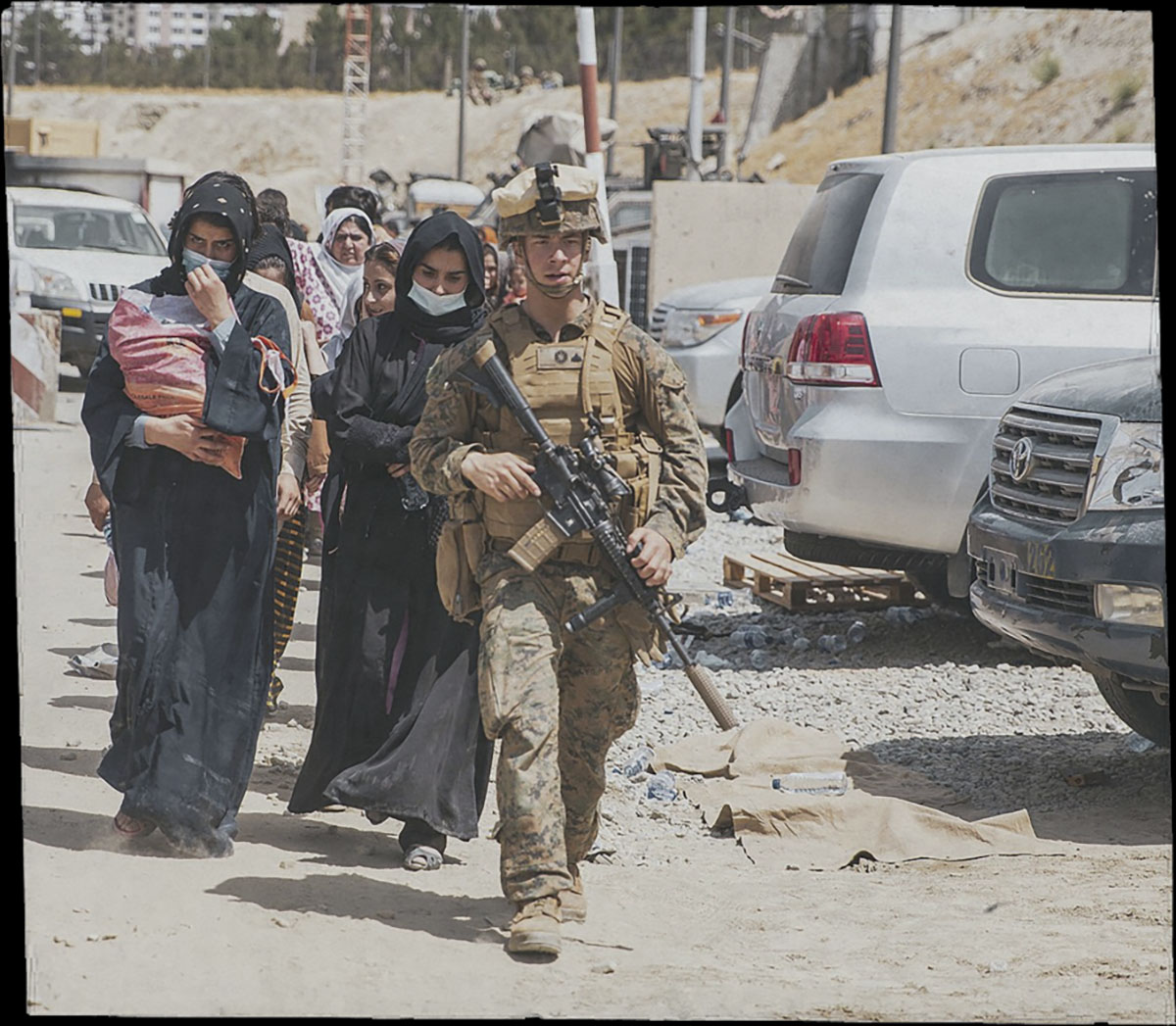An interactive timeline with key dates spanning from September 11, 2001 until after the fall of Kabul.

September 11, 2001
The September 11 attacks are the deadliest terrorist attacks on American soil in U.S. history. The attacks in New York City and Washington, D.C. cause extensive death and destruction and trigger an enormous U.S. effort to combat terrorism. Some 2,750 people are killed in New York, 184 at the Pentagon, and 40 in Pennsylvania (where one of the hijacked planes crashes after the passengers attempt to retake the plane); all 19 terrorists die. Police and fire departments in New York are especially hard-hit: more than 400 police officers and firefighters are killed.
Source: Brittanica
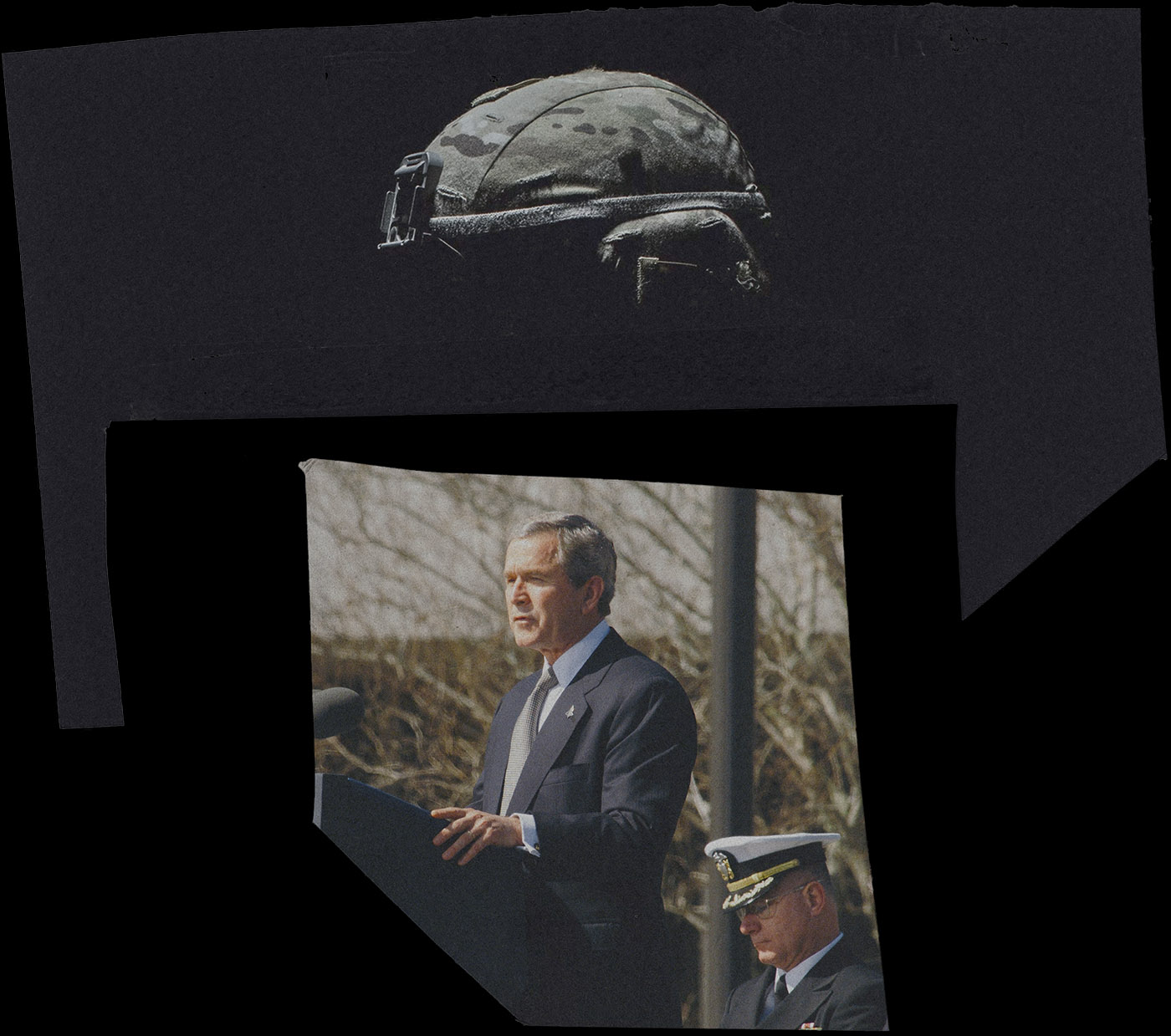
Late-September, 2001
On September 18, President George W. Bush signs into law a joint resolution authorizing the use of force against those responsible for attacking the United States on 9/11. This joint resolution will later be cited by the Bush administration as legal rationale for its decision to take sweeping measures to combat terrorism, from invading Afghanistan, to eavesdropping on U.S. citizens without a court order, to standing up the detention camp at Guantanamo Bay, Cuba. The campaign in Afghanistan starts covertly on September 26, with a Central Intelligence Agency (CIA) team known as Jawbreaker arriving in the country and, working with anti-Taliban allies, initiating a strategy for overthrowing the regime. U.S. officials hope that by partnering with the Afghans they can avoid deploying a large force to Afghanistan.
Sources: CFR; Whitehouse Archives; Brittanica; CIA Twitter
October 7, 2001
The U.S. military, with British support, begins a bombing campaign against Taliban forces, officially launching Operation Enduring Freedom. Canada, Australia, Germany, and France pledge future support. The war’s early phase mainly involves U.S. air strikes on al-Qaeda and Taliban forces that are assisted by a partnership of about one thousand U.S. special forces, the Northern Alliance, and ethnic Pashtun anti-Taliban forces. The first wave of conventional ground forces arrives twelve days later. Most of the ground combat is between the Taliban and its Afghan opponents.
SOURCE: CFR
December 6 & 7, 2001
Kandahar, the largest city in southern Afghanistan and the Taliban’s spiritual home, falls, marking the end of Taliban power.
Source: Brittanica
May 1, 2003
U.S. Secretary of Defense Donald Rumsfeld announces an end to “major combat” in Afghanistan. On the same day, aboard the aircraft carrier USS Abraham Lincoln, President Bush announces that “major combat operations in Iraq have ended.” At that time, there are 8,000 U.S. troops in Afghanistan.
Sources: Brittanica; CNN
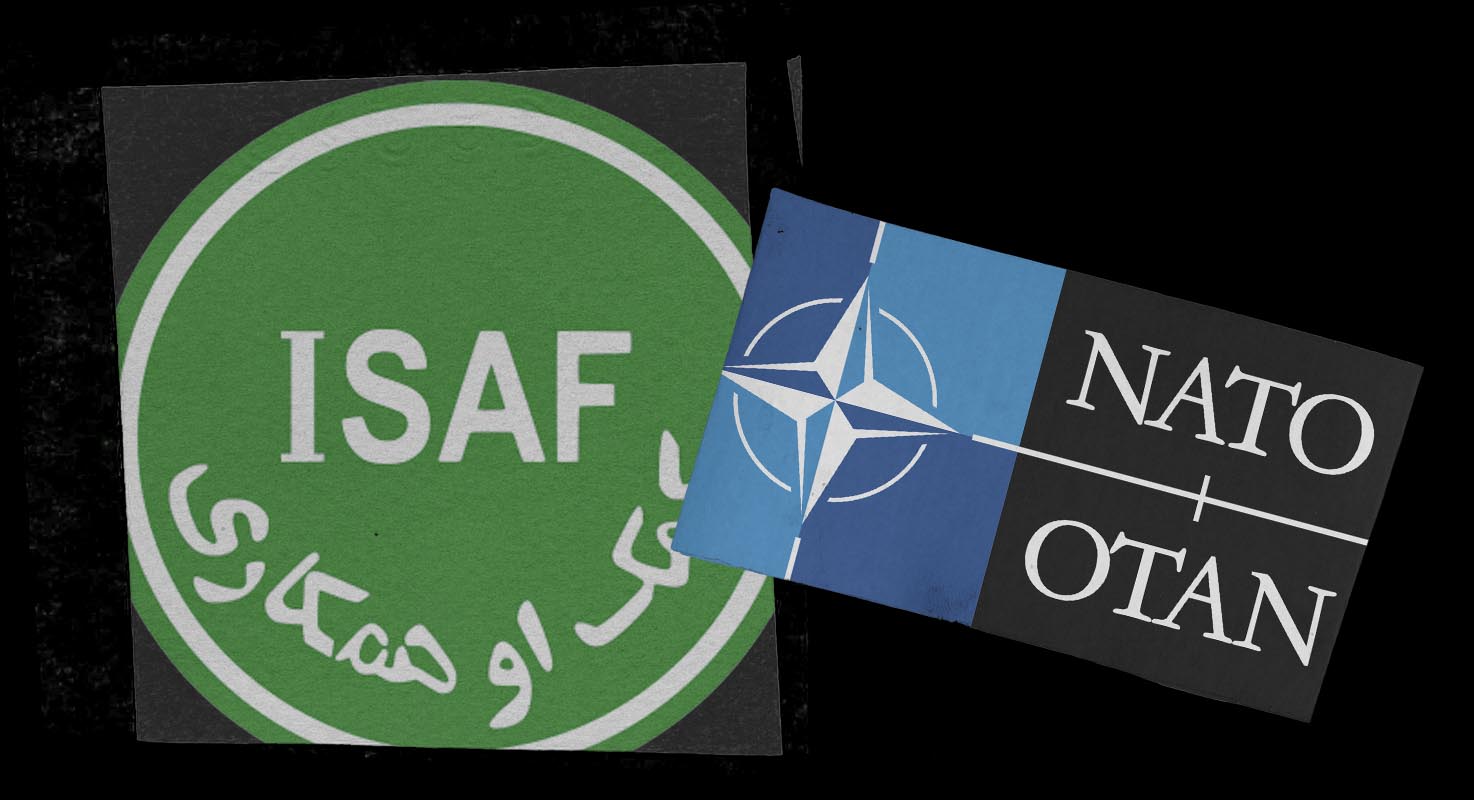
August 8, 2003
The North Atlantic Treaty Organization (NATO) assumes control of international security forces (ISAF) in Afghanistan, expanding NATO/ISAF’s role across the country. It is NATO’s first operational commitment outside of Europe. Originally tasked with securing Kabul and its surrounding areas, NATO expands in September 2005, July 2006, and October 2006. The number of ISAF troops grows accordingly, from an initial five thousand to around sixty-five thousand troops from forty-two countries, including all twenty-eight NATO member states.
SOURCES: CFR; NATO
January & October, 2004
An assembly of 502 Afghan delegates agrees on a constitution for Afghanistan, creating a strong presidential system intended to unite the country’s various ethnic groups. The act is seen as a positive step toward democracy. President Karzai signs it on 26 Jan. The first democratic Afghan elections since the fall of the Taliban are held on Oct 9, with approximately 80 percent of registered voters turning out to give Hamid Karzai a full five-year term as president with 55.4 percent of the vote. Parliamentary elections are staged a year later, with dozens of women claiming seats set aside for them to ensure gender diversity.
Source: Brittanica

2005-2006
Violence climbs as the Taliban reasserts its presence with new tactics modeled on those being used by insurgents in Iraq. Whereas early in the war the Taliban has focused on battling U.S. and NATO forces in open combat—a strategy that largely fails to inflict significant damage—their adoption of the use of suicide bombings and buried bombs, known as IEDs (improvised explosive devices), begins to cause heavy casualties.
SOURCE: Brittanica
2009
US President Barack Obama is inaugurated in Washington DC on 29 Jan. He promises to focus attention and resources on the faltering war effort in Afghanistan. In August, President Hamid Karzai wins a new five-year term in an election that is tainted by widespread allegations of fraud. The disputed election means Karzai officially wins in November. On 1 Dec, nine months after renewing the U.S. commitment to the Afghan war effort, President Obama announces a major escalation of the U.S. mission. In a nationally televised speech, the president commits an additional thirty thousand forces to the fight, on top of the sixty-eight thousand in place.
Sources: Brittanica; CNN; CFR; NYT
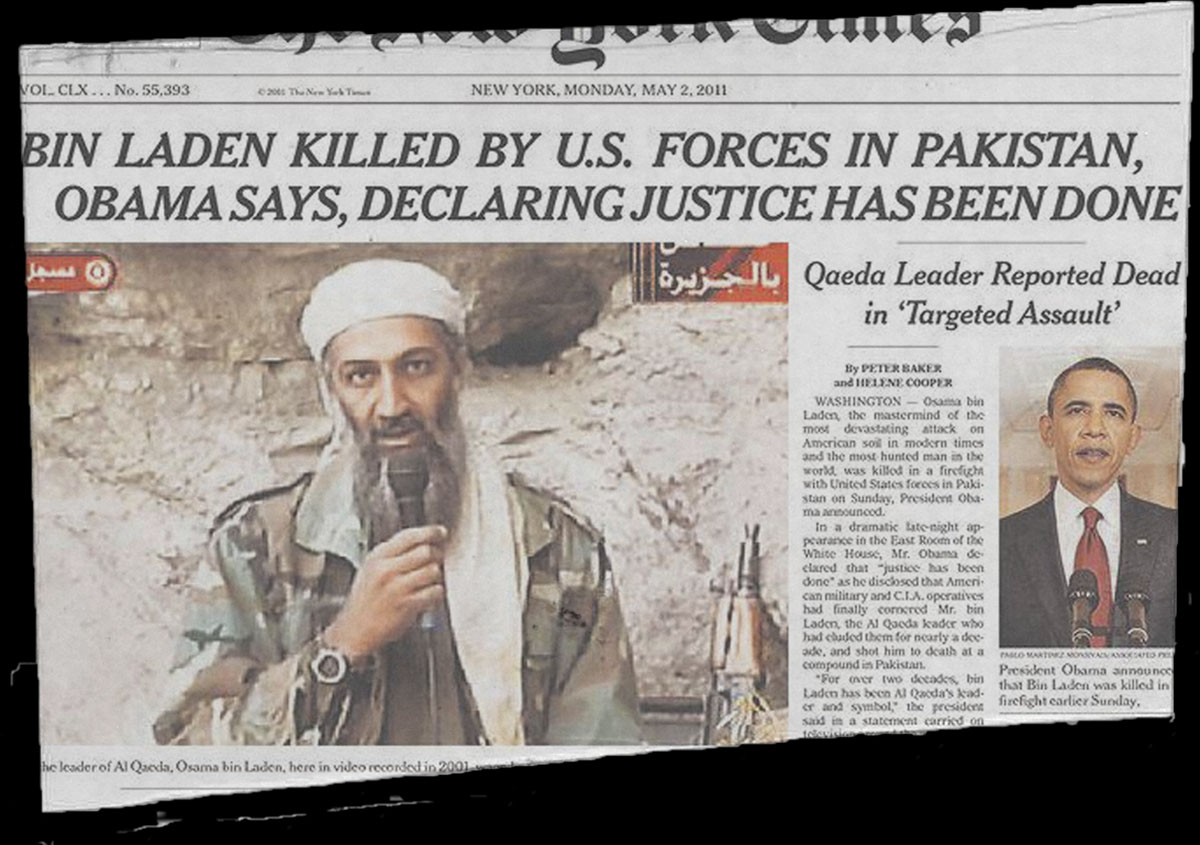
May 1-2, 2011
Osama bin Laden is killed by U.S. forces on May 2, 2011, after U.S. intelligence locate him living in a secure compound in Abbottabad, Pakistan. The operation, a raid carried out by a small team that reached the compound by helicopter, leads to a firefight in which bin Laden dies. In June, U.S. Secretary of Defense Robert Gates confirms for the first time that the U.S. government is holding reconciliation talks with the Taliban, although he stresses that efforts to negotiate an end to the conflict are still in the preliminary stages.
SOURCE: Brittanica
June, 2013
Afghan forces take the lead in security responsibility nationwide as NATO hands over control of the remaining ninety-five districts. The U.S.-led coalition’s focus shifts to military training and special operations-driven counterterrorism. The handover occurs on the same day as the announcement that Taliban and U.S. officials will resume talks in Doha, Qatar, where the Taliban has just opened an office. President Hamid Karzai, believing the office will confer legitimacy on the insurgent group and serve as a diplomatic outpost, suspends negotiations with the United States. With its mandate expiring in December 2014, the United States must negotiate a bilateral security agreement with the Karzai government to maintain a military presence.
Sources: CFR; NATO
September-December, 2014
Ashraf Ghani is inaugurated as president and immediately signs the Bilateral Security Agreement, under which some 10,000 U.S. troops can remain in Afghanistan after the international combat mission ends on December 31. On December 28, the U.S. and NATO formally end their combat mission in Afghanistan, but retain a reduced force of approximately 13,000 troops to support and train Afghan troops until a drawdown in 2020.
SOURCES: Brittanica; NYT

January 20, 2017
President Donald J. Trump is inaugurated in Washington DC.
Source: TIME
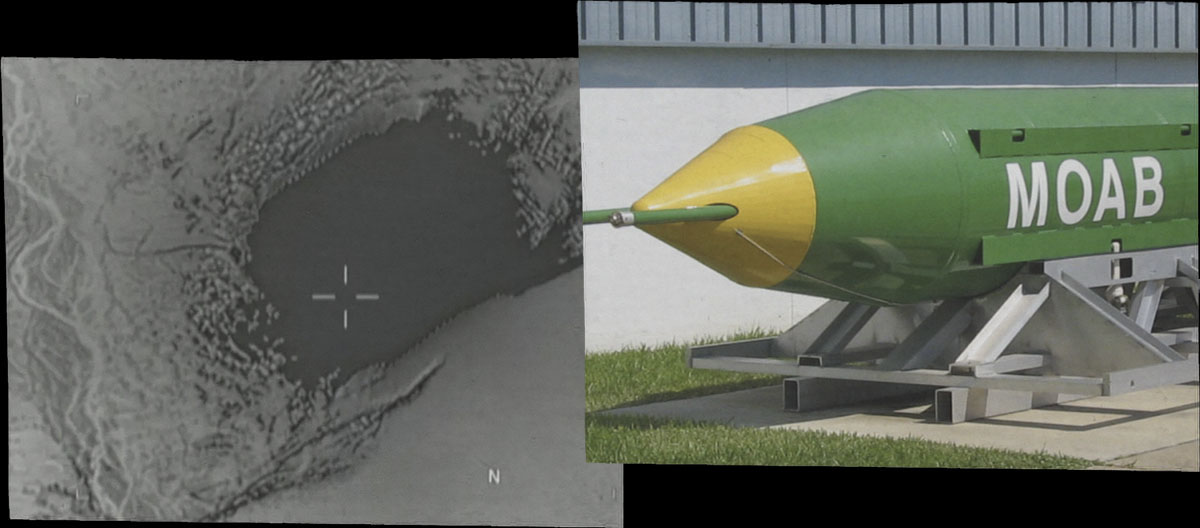
April 13, 2017
The United States drops its most powerful non-nuclear bomb on suspected self-proclaimed Islamic State militants at a cave complex in eastern Nangarhar Province. The weapon, known colloquially as “the mother of all bombs,” comes as newly elected President Donald Trump delegates decision-making authorities to commanders, including the possibility of adding several thousand U.S. troops to the nearly nine thousand already deployed there. The bombing casts a spotlight on the emergence of the Islamic State in Afghanistan. At the same time, the Taliban appears to be as strong as ever, and the U.S. military describes the war as a stalemate. Kabul experiences suicide bombings on a scale never before seen, while the Taliban control or contest more than a third of the country. U.S. Marines are once again dispatched to Helmand Province.
SOURCES: CFR; CBS
January-April, 2021
The inauguration of Joe Biden as the 46th president of the United States took place on Wednesday, January 20, 2021, marking the start of the four-year term of Joe Biden as president and Kamala Harris as vice president. On April 14, President Biden announces that the United States will not meet the deadline set under the U.S.-Taliban agreement to withdraw all troops by May 1 and instead releases a plan for a full withdrawal by September 11, 2021.
SOURCES: CFR; US DOD
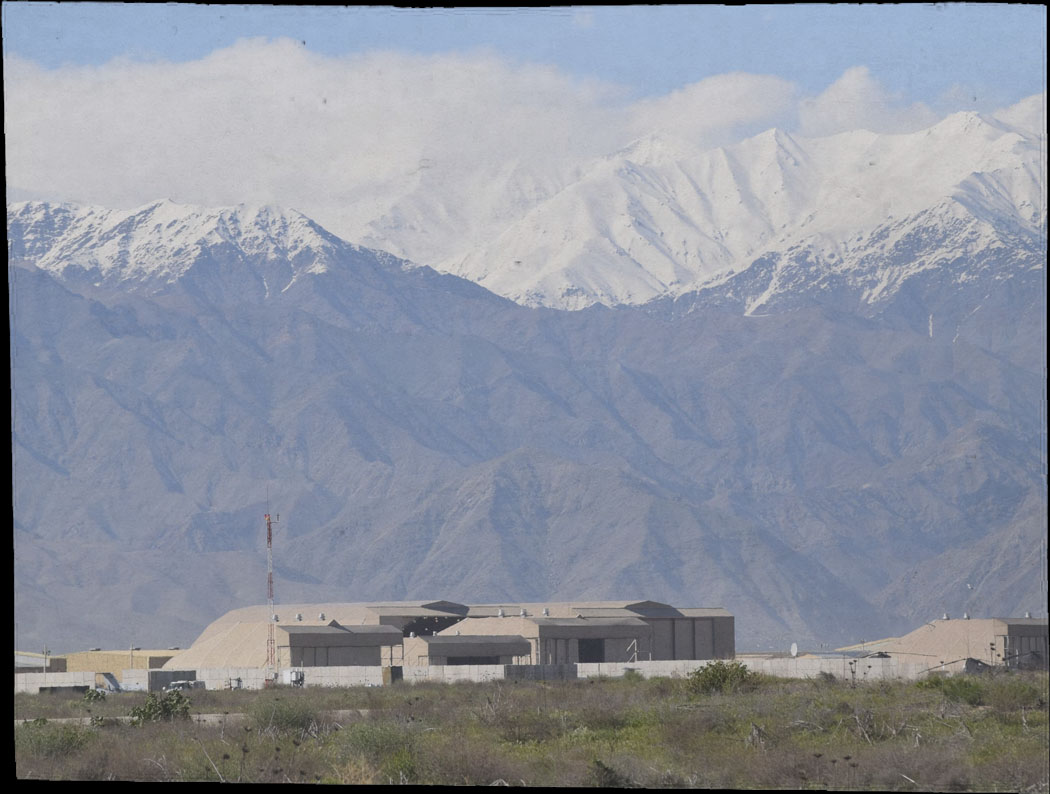
July 2, 2021
Despite these advances, the withdrawal remains underway. On July 2, the United States announces it has vacated Bagram, its most important airfield in the country, 45 miles north of Kabul. The move marks a major step in the drawdown, as the base, which once housed tens of thousands of U.S. troops at the height of the war, is handed over to Afghan forces. But the handoff is less than graceful. Afghan officials say the United States left without telling them, turning off the electricity and departing in the dead of night. The Pentagon says it had coordinated with high-level Afghan officials.
Sources: WAPO; NYT
Early August, 2021
By the beginning of August, the Taliban is advancing on territory it has not seized in two decades. The group launches assaults on two major Afghan cities, Kandahar and Herat, shooting rockets at their airports. The group has previously made gains only in rural areas. Now they are testing densely populated economic centers. In Helmand province on Aug. 4, health officials see injured patients, caught in the crossfire of increased fighting.
SOURCES: WAPO; AP
August 12-13, 2021
The fall of Kabul seems all but inevitable on Aug. 13. As the situation spirals, the U.S. government on Aug. 12 announces it will send some 3,000 combat troops to help evacuate diplomats, civilians and Afghans who helped the United States during the war. Other international embassies also make plans to shutter their doors and evacuate diplomats and civilians.
Sources: CNN; WAPO
August 15, 2021
The next day, Taliban forces enter Kabul, and Ghani flees the country, signaling the collapse of the government. Nine days after seizing its first provincial capital, the group appears to have taken control of virtually the entire nation. As countries scramble to evacuate people from the Kabul airport, Secretary of State Antony Blinken defends the U.S. withdrawal. “The president made the determination that it was time to end this war for the United States, to get out of the middle of a civil war in Afghanistan and to make sure that we were looking at our interests across the world,” he says on ABC News. Blinken says U.S. Embassy personnel in the fortified Green Zone are being relocated to the Kabul airport for safety reasons. Night settles in Kabul, and Taliban fighters mill about in the presidential palace. They sit behind what was Ghani’s desk just a few hours earlier and cluster in a room that looked set up for negotiations. As the world watches, a member of the Taliban takes down the flag of Afghanistan hanging within the palace walls, rolls it up and sets it to the side.
SOURCES: WAPO; AL Jazeera
August 26, 2021
Two suicide bombings occur outside the Abbey Gate of the Kabul airport as thousands of Afghans try to flee the country following the Taliban’s takeover. The bombings killed at least 169 Afghans and 13 U.S. troops. The extremist group ISIS-K, the affiliate of ISIS, which uses the “K” to reference an old name for Afghanistan, Khorasan, claimed responsibility for the explosions. That group first appeared in eastern Afghanistan in late 2014. Aug. 26 is the deadliest day for American troops in the country since 2011.
Sources: PBS; AP
August 30, 2021
The last U.S. military forces depart Afghanistan, leaving it under Taliban rule. The exit follows a chaotic, two-week withdrawal process during which more than 120,000 people are evacuated. The next day, President Biden says the United States should learn from its mistakes and that the withdrawal marks the end of “an era of major military operations to remake other countries.” Thousands of Afghans who assisted the United States and its allies, as well as up to two hundred Americans, remain in Afghanistan. U.S. Secretary of State Antony Blinken says Washington will work to get them out and that future U.S. engagement in Afghanistan will focus on diplomacy.



